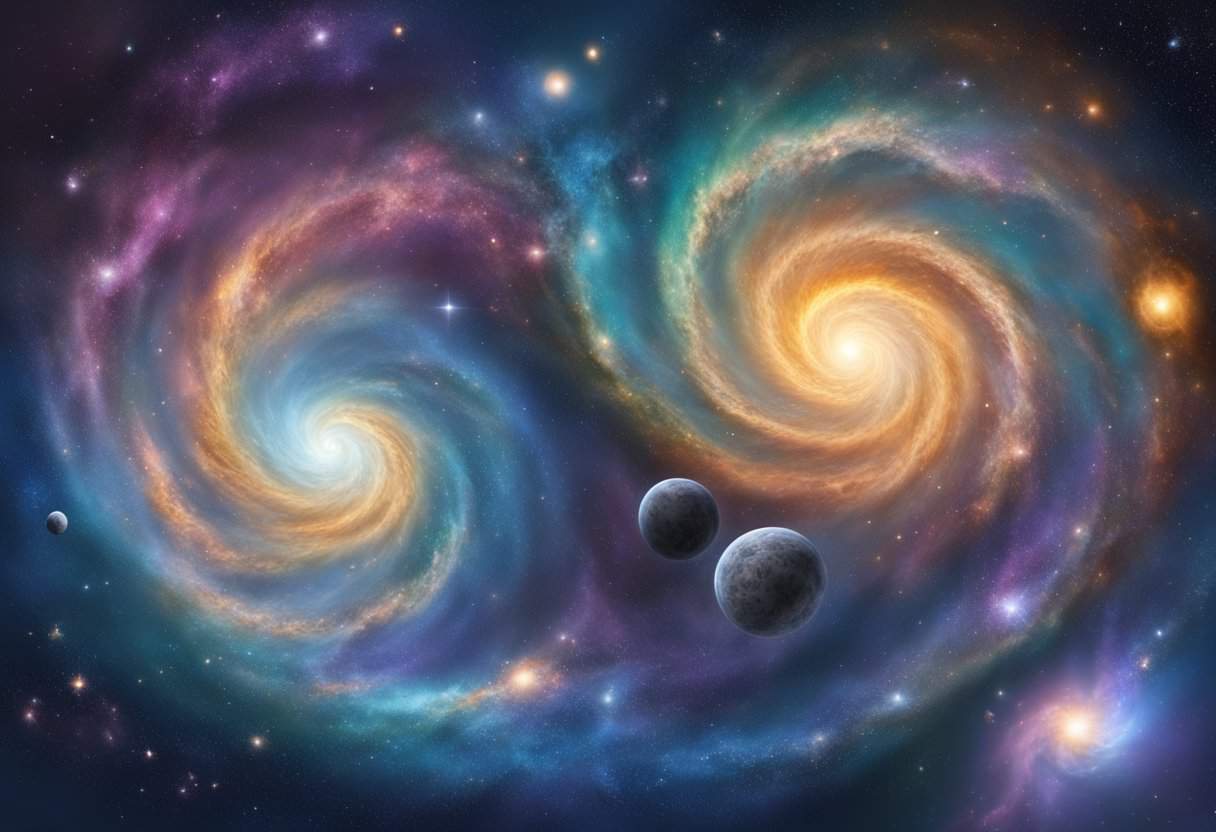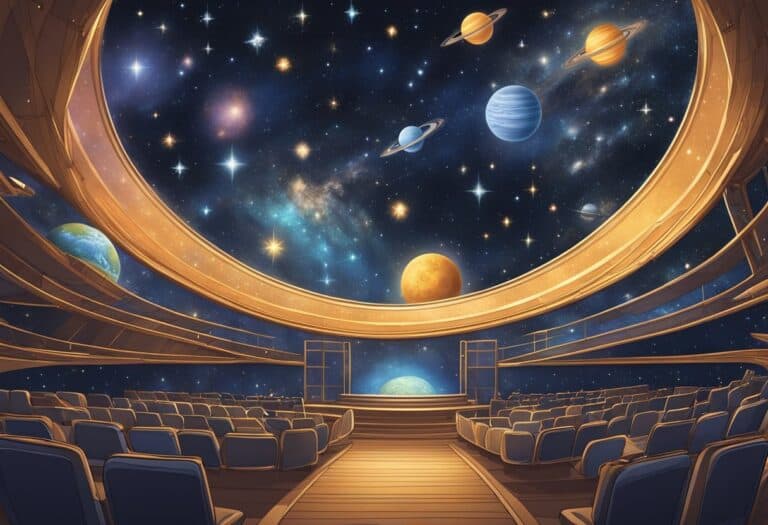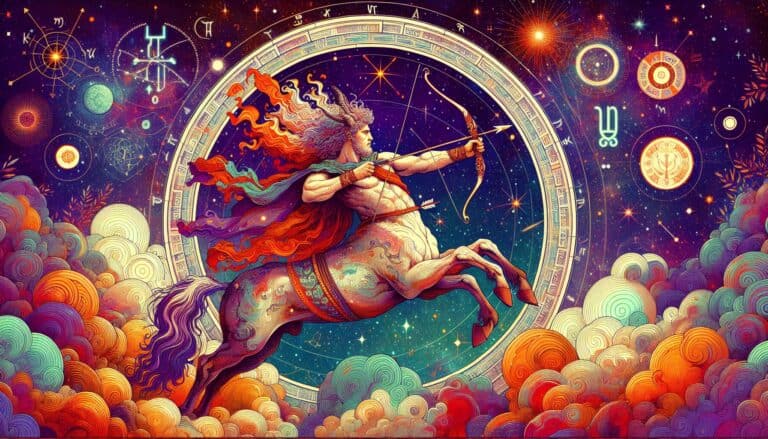When exploring the vast expanse of both the scientific and speculative, the concept of “universes” carries with it an intrigue that spans multiple disciplines.
In scientific terms, a universe refers to the totality of everything that exists, including all space, time, matter, energy, and the physical laws and constants that govern them. However, the term also branches out into various theories and interpretations ranging from the strictly cosmological to the realms of fiction and philosophy.
The classification and naming of these universes are as varied as their hypothetical properties. Cosmologists and physicists use terms like multiverse, parallel universes or alternate dimensions to describe the potential collection of multiple universes that may exist within a larger multiversal framework. Names in these contexts serve a functional purpose, grounding high-level concepts into more comprehensible parts.
Conversely, in fiction and mythology, names of universes often evoke a sense of wonder, mystery, or cultural significance, creating immersive worlds for storytelling.
Names of universes, ranging from scientific concepts like ‘multiverse’ and ‘parallel universes’ to fictional realms, serve to categorize and captivate. Scientific terms ground complex theories, while fictional names spark imagination, creating immersive storytelling worlds.
Cosmological Concepts

In your journey through the cosmos, you’ll encounter diverse and complex ideas that redefine the very nature of existence. These concepts move beyond the observable universe, inviting you to explore the realms of possibility and theory that have captured the minds of cosmologists and physicists alike.
Multiverse Theories
When you delve into Multiverse Theories, you’re not just considering one universe; you’re engaging with the idea that there could be multiple, perhaps infinite, universes beyond our own. Two prominent theories you’ll come across are:
- Bubble Universes: Imagine each universe as a bubble, floating in a larger multiverse. In this scenario, every universe may have different physical constants and laws.
- Parallel Universes: Here, parallel realities exist alongside our own, potentially with variations of your very own existence. It’s an idea deeply rooted in quantum mechanics.
Dimensions and Parallel Realities
You’re familiar with three dimensions of space, but in Dimensions and Parallel Realities, the scope widens:
- String Theory: This posits the existence of additional spatial dimensions, which could be as many as 11, according to some physicists.
- Parallel Realities: Related to multiverse theory, this reflects the concept that decisions you make could spawn alternate realities where different outcomes occur.
The study of cosmological concepts and the universe’s bounds takes us on a journey through the deepest questions in science. Such lines of thinking have revolutionized our understanding of the fabric of existence.
Fictional Depictions
Exploring the breadth of Fictional Depictions, you will find that names of universes serve as a cornerstone in understanding their narratives. These names often reflect the unique characteristics and themes present within their worlds.
Literature Interpretations
In literature, authors meticulously craft universes that often become as integral to the story as the characters themselves. For example, the quantum universe is a concept explored where the realm’s physics may greatly differ from our reality, adding unique layers to the narrative fabric.
Cinematic Universes
The cinematic universes often hinge on iconic locations or entire worlds with names that evoke wonder, such as those portrayed through the lens of parallel universes in films. These names are crafted to resonate with the audience and often become cultural touchstones.
Video Game Realities
Video games offer immersive experiences with universes that are detailed and interactive. Players may roam the expansive landscapes of titles like “Elder Scrolls’ Tamriel” or “Mass Effect’s” galaxy, each with its distinctive lore and name to match its digital environment.
Scientific Approaches
In the realm of cosmic inquiry, your understanding of universe naming draws heavily from well-established scientific disciplines. Here, you’ll explore how astrophysical models and quantum mechanics frame the nomenclature and concepts behind different universes.
Astrophysical Models
Your comprehension of astrophysical models hinges on observing the cosmos through advanced telescopes and interpreting celestial phenomena. These models, grounded in general relativity and cosmology, offer names rooted in the physical characteristics and dynamics of the universe. For instance, you may encounter the Friedmann-Lemaître-Robertson-Walker (FLRW) model which is instrumental in describing a homogeneous and isotropic universe.
Quantum Mechanics Perspectives
Turning to quantum mechanics, your perspective shifts to a probabilistic vista of the universe. This domain of physics suggests a multiverse brought forth through quantum superposition and entanglement. It postulates the existence of several universes, each named for their unique quantum state or configuration, such as the “Many-Worlds” interpretation, which implies a sprawling tree of divergent realities, each labeled for their branching point in a decision or quantum event.
Cultural and Mythological Views
Throughout history, you’ve seen that different societies have crafted their own understandings of the universe. These views often reflect the myths and cultural milieu of the civilizations.
Ancient Cosmologies
In ancient times, your ancestors developed detailed cosmologies, embedding their observations and beliefs into cultural narratives. The Egyptians, for example, conceived of the universe as a layered domain, with the earth a flat disk and the sky a protective covering held aloft by the god Shu. Moving to Greece, you’d encounter the geocentric model proposed by Ptolemy, which held sway into the medieval period, insisting that all celestial bodies revolve around your planet.
Modern Mythos
Even in modern times, mythological views weave through your cultures. Books explaining the Kalapalo view of the universe demonstrate the role of storytelling in shaping society’s understanding. Your love for myth persists in your metaphors and allegories, reflecting modern desires and fears about the cosmos in tales of superheroes and fictional cosmic events.
Terminology and Classification
When exploring the categorization of different universes within library systems or scientific theories, it’s essential to understand the precise terminology and specific classification criteria involved.
Terminology:
- Universe: Often used as a broad term to describe any complete, self-contained domain of study or existence. In library science, this refers to the entire body of knowledge or collection of documents.
- Finite Universes: These are defined, controlled scopes or sets of elements within a larger context, such as a particular field within a classification system.
Classification:
- Library Classification: This hierarchical system organizes knowledge or items based on similarities and differences and is often represented by symbolic notations. For an understanding of the complexity in library classifications, you can consult the Prolegomena to library classification.
- Gene Classification: In biological contexts, classification can refer to assigning genes to categories based on associated functional attributes. The correct specification of the gene pool, or ‘universe’, is crucial for this process.
Groups in Library Classification Glossary:
- Classification of finite universes
- Universe of library classification
- Knowledge classification
- Universe of documents
- Chain procedures
Each category or ‘universe’ follows a structured approach to ensure accuracy and thoroughness. Whether you are dealing with complex library systems or the intricate details of biological classification, it’s your comprehension of these terms and structures that will guide your understanding and application of the information.
Frequently Asked Questions
In this section, you’ll find detailed answers to common questions about the structure of the cosmos, from the classification of galaxies to the creation of names for fictional universes.
What are the different categories of galaxies within the universe?
Galaxies are generally classified into three main types: elliptical, spiral, and irregular. Elliptical galaxies are round or oval in shape, spiral galaxies have winding arms, and irregular galaxies lack a distinct shape.
Can you provide a list of notable galaxies in astronomical observation?
Notable galaxies include the Andromeda Galaxy, the Whirlpool Galaxy, and the Sombrero Galaxy. Each has unique features and has been extensively studied for insights into galaxy formation and behavior.
What is the name of our galaxy and its place within the cosmos?
Our galaxy is named the Milky Way Galaxy. It’s a barred spiral galaxy that’s part of the Local Group, a galaxy cluster that also includes Andromeda and about 54 other galaxies.
How many estimated galaxies are there in the observable universe?
Current estimates suggest there are approximately two trillion galaxies in the observable universe, according to the Hubble Space Telescope observations.
Could you name some well-known fictional universes in literature and media?
Well-known fictional universes include the Wizarding World of Harry Potter, the galaxy of Star Wars, and the Middle-earth of The Lord of the Rings series. These universes are rich in detail and have captivated audiences globally.
Do you have any suggestions for creating unique universe names for creative works?
When creating unique universe names for creative works, consider combining words or concepts that evoke the setting’s scale and mystery. Inventiveness and relevance to the story’s context can help generate a memorable name.


![Best Telescopes for Viewing Planets & Galaxies in [year]](https://observationhobbies.com/wp-content/uploads/2024/01/Best-Telescopes-for-Viewing-Planets-Galaxies-768x525.png)
![Best Flashlight for Astronomy: A [year] Guide](https://observationhobbies.com/wp-content/uploads/2024/01/Best-Flashlight-for-Astronomy-768x525.png)

![Sky Watcher EQ6-Ri Pro Review: [year] Telescope Mount](https://observationhobbies.com/wp-content/uploads/2024/01/Sky-Watcher-EQ6-Ri-Pro-Review-768x525.png)

